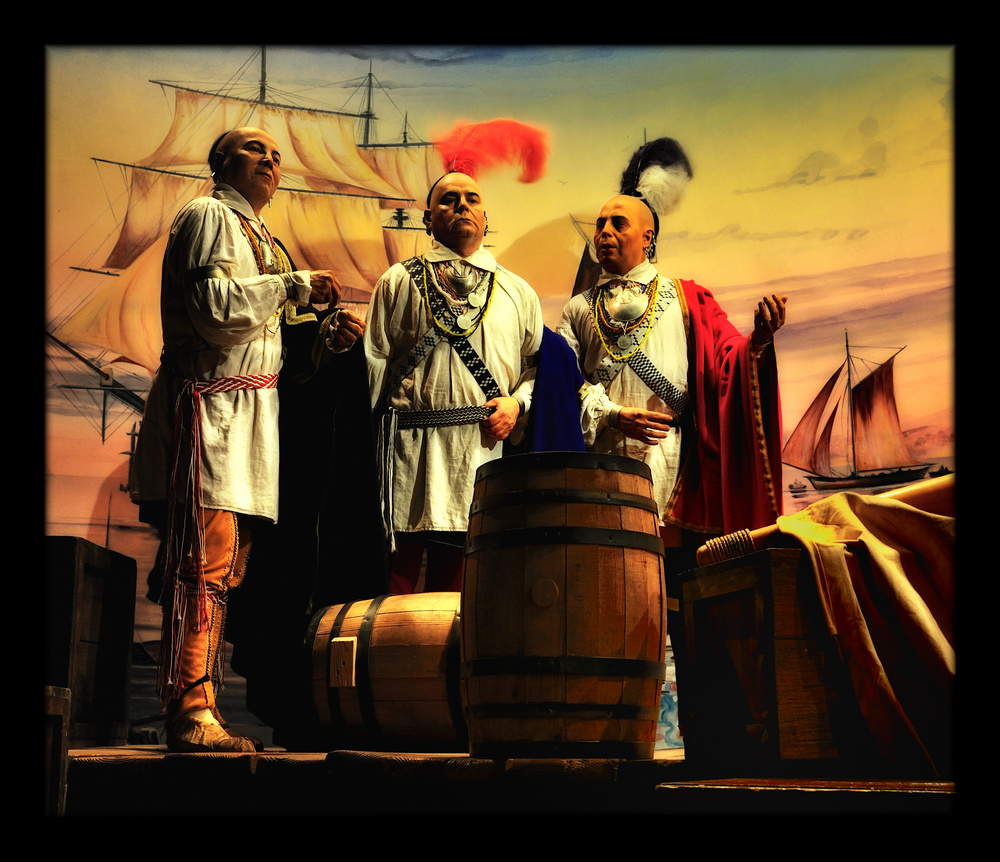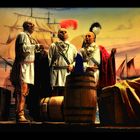Emissaries of Peace: The 1762 Cherokee & British Delegations
This exhibit tells the story of Henry Timberlake’s visit to the Cherokees in 1762, and how he took Cherokee leaders to London to meet with King George III. Timberlake’s Memoirs come to life through artifacts, archaeological treasures, period artwork, music, video, and life size figures. Experience the two contrasting cultures as they emerge from war and make peace. Special pop-up books and graphic panels tell the story for children.
Emissaries was designated a “We the People” exhibit because of its excellence in telling the story of American history. It has been on display at the Smithsonian Institution National Museum of American History in Washington, D.C., and at the McClung Museum at the University of Tennessee in Knoxville. Colonial Williamsburg’s documentary film and electronic field trip based on Emissaries received an Emmy for sound production.
After battles, town-burnings, ambushes and massacres, the warring Cherokee and British were on the brink of treaty. By November 19, 1761, one sticking point remained. The Cherokee warriors gathered at Fort Robinson asked that a British emissary return with them to their homelands, as a show of goodwill. This was a mission too perilous to assign, the British officer in charge decided.
Stepping into the void, junior officer Lt. Henry Timberlake volunteered. He would “...become hostage to a people, who, tho’ unacquainted with the laws of war or nations, seemed now tolerably sincere ...”
Timberlake marched and paddled off to his fate much to our benefit, because he proved not only intrepid, but also a keen observer and engaging writer. His published Memoirs, the best and fullest account of 18th-century Cherokee life, which recounts adventures ranging from his welcome at a Cherokee dance ground, where “...the headman, waving his sword over my head, struck it into the ground, about two inches from my left foot ...” to an audience at the court of King George III, where the three Cherokee chiefs he presented to the monarch were “...struck with the youth, person, and grandeur of his Majesty and conceived ... as great opinion of his affability as of his power ...”
Emissaries of Peace
Now, these Memoirs plus a wealth of related artifacts comprise the return of the extraordinary exhibit at the Museum of the Cherokee Indian:“Emissaries of Peace the Cherokee and British Delegations of 1762.”
The Emissaries of Peace exhibit experienced an unprecedented visibility at the Smithsonian National Museum of Natural History from June through November 2007 in Washington, D.C. It is estimated that 3.9 million people viewed the historic exhibit during this time frame, providing Cherokee with a level of exposure and significance never before seen in any other setting.
The several hundred artifacts in the exhibit include peace pipes, weapons, eyeglasses, uniforms, clothing, tableware, baskets, jewelry, documents, maps, and artwork. The exhibit also is accompanied by a catalog and includes video presentations, interactive displays, and small-scale dioramas.
“Emissaries of Peace,” was funded by the National Endowment for the Humanities, and received a presidential designation as a “We the People” exhibit. It was the only traveling exhibition produced by members of an American Indian tribe. The Museum of the Cherokee Indian curated the original exhibit, which had about 70,000 visitors during its debut at the Museum from October 2005 through September 2006. The exhibit then traveled to the McClung Museum in Knoxville, Tennessee, where it remained on display until February 2007.
From the council houses of the Cherokees to the pleasure houses of London, Emissaries lets us see Cherokee and English society of the mid-18th century, each viewed through the eyes of the other. Here are some appetizers from this rich exhibit:
Timberlake: “...who would seek to live by labour, [if they can] live by amusement? The sole occupations of Indians, are hunting, and warring abroad, and lazying at home. Want is said to be the mother of industry, but their wants are supplied at an easier rate.”
Corn Tassel: “You say: Why do not the Indians till the ground and live as we do? May we not with equal propriety ask, Why the white people do not hunt and live as we do? The Great God of Nature has placed us in different situations ...
source: http://www.cherokeemuseum.org/exhibits-emissaries.htm











kto -Carlos Torres- 18/05/2010 16:16
Muy buena. Felicidadeslocke 1 11/05/2010 18:19
Ein tolles Szenario!Farbgestalung und Qualität sind sehr
anspechend.
LG Werner